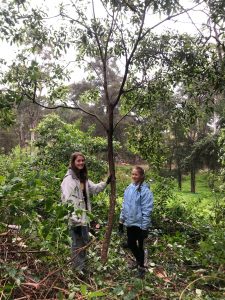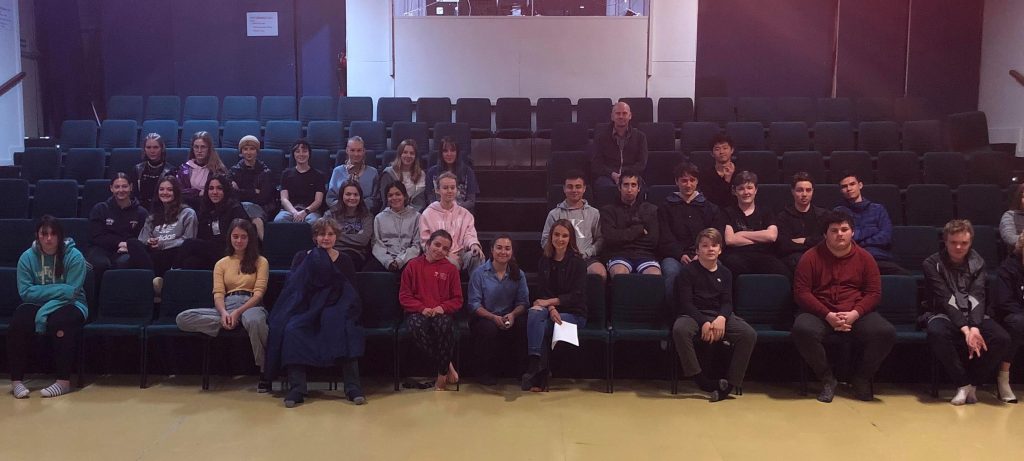Cattai Hills Environment Network (CHEN) teamed up with the Hawkesbury-Nepean Landcare Network to facilitate and assist Lorien Novalis School undertake a project that would engage a class of year 9 students with the bushland that resides within the school grounds.
This bushland was primarily dominated by three environmental weeds, Lantana Camara, Ochna serrulata, and Ligustrum lucidum. Indeed, the Dooral Dooral creek which flows through this bushland was not accessible to the students due to these weeds. We thought this creek would be a valuable asset to help educate the students on water health, as well as give the students the opportunity to contribute to its health through weed management.
With the help and communication between the teachers at Lorien Novalis, Katherine Clare, the Hawkesbury-Nepean Landcare Coordinator, and Danielle Packer, the Cattai Aware Urban Project Officer at CHEN, we organized a project that would entail removing Lantana Camara to free the native plants that were being suffocated by the weed and to create a pathway to gain access to the Dooral Dooral creek, in which the weeds were restricting access to. The plan also included the creation of a meeting circle within the area that had a fireplace and a humpy for the students to use. Due to the enormous amount of Lantana, there was on this particular site, the name ‘Lantana land’ was given but with the aim of making it Lantana land no more…
Free the Natives!

After teaching the students how to remove Lantana safely, the first mission was to remove the Lantana that was burying the native trees. We called it operation, ‘Free the Natives!”
It was such a thrill when the students revealed the native trees underneath the Lantana, a very satisfying and rewarding process the students enjoyed. All the students got involved which was great to see and by doing so, accomplished a tremendous amount of work in just one two-hour session!
Career Session
After our first session, we went to the hall to talk to the students about working in the environmental field including those in year 11 who came to visit. Among other topics, we touched on the importance of volunteering and how the skills you learn in volunteering opportunities such as Bushcare and Streamwatch can really help you stand out to employers. After our talk, a couple of students expressed interest in getting involved in volunteer opportunities such as bushcare and are keeping in regular contact with CHEN and Landcare for further assistance in getting ahead on their environmental career path.

Reflection
After seven sessions of bush regeneration in Lantana Land, the creation of a humpy, and a meeting circle, we huddled together with damper on fire and reflected on what we all had learned. It was great to see interest expressed from the students, and the simple lessons they learnt such as the significant impact of teamwork, the importance of looking after the land and an understanding of weeds and how they impact bushland and water quality.

Want More Environmental Engagement At Your School?
CHEN and the Hawkesbury-Nepean Landcare Network are looking for schools that want to engage in similar activities related to environmental education. If you would like to reach out to organize a meeting to discuss potential ideas for your school, community group, or other, please feel free to contact CHEN’s Project Officer, Danielle Packer (danielle@chen.org.au), or the Hawkesbury-Nepean Landcare Coordinator, Katherine Clare (landcare@hrcc.nsw.gov.au).

Otherwise, being a part of Sustainable Schools NSW, is a great way to ‘connect environmental educators with relevant resources, interactive lessons and a like-minded community to help spread the important message of sustainability to future generations.’

